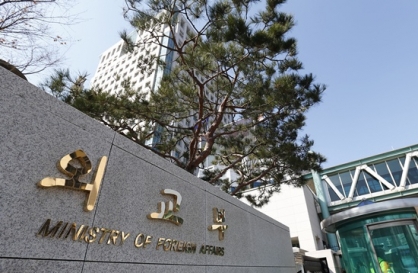S. Korea eyes World Heritage status for ancient fortress wall
By KH디지털2Published : Nov. 6, 2014 - 12:58
South Korea will apply for an ancient defensive wall encircling its capital city to be given World Heritage Status in 2016, a government committee said Thursday.
The Seoul City Wall, an 18.6-km-long wall surrounding Hanyang, the former capital of the Joseon Dynasty (1392-1910) and present-day central Seoul, was chosen during a meeting on Tuesday to be, among all other heritage items, on South Korea's application for the UNESCO heritage listing for 2016, the Cultural Properties Committee said.
The advisory panel under the Cultural Heritage Administration stated that the wall, which follows the ridges of four inner mountains surrounding the center of Seoul, was well-kept and underwent regular repairs throughout the 500-year Joseon period since it was first constructed in 1396.
It has considerable value as a stone structure that embraces the local topography and embodies the skills of builders and the labor of the many people who took part in its construction and repairs throughout the dynasty, the panel said.
Sections that were built or repaired in different periods yield evidence of the different construction skills and materials used, thereby serving as a valuable historical reference, the committee added.
At present, a 12-km section of the wall is designated as "Historic Site No. 10" and is protected accordingly, along with the gates, water gates and signal fire mounds. Certain sections of the walls have undergone extensive restoration work, having sustained damage or been entirely destroyed at various times in the city's past.
The Cultural Heritage Administration and the Seoul metropolitan government will submit the application to UNESCO in January 2016, officials said.
Meanwhile, Seoul Mayor Park Won-sun unveiled a plan to add three more heritage items in the city to the world heritage list, during his visit to Dujiangyan, a UNESCO heritage site in western China, on Thursday.
The three are the ruins of the Hanseong-Baekje period, Seonggyungwan and Munmyo, and the Yongsan army base.
The Hanseong-Baekje period is when the Baekje Kingdom (18 B.C.
- 660 A.D.), an ancient Korean kingdom located in the southwestern part of the Korean Peninsula, established its capital in the lower reaches of the Han River in the early years of the kingdom. The ruins, including fortresses and ancient tombs, are considered the starting point of Seoul's 2,000-year-long history.
During the Joseon Dynasty, Seonggyungwan was the foremost educational institution and Munmyo was the primary Confucian shrine. Both are located on the campus of Sungkyunkwan University in central Seoul.
The site for the U.S. Army Garrison Yongsan symbolizes the turbulent modern world history surrounding the Korean Peninsula. (Yonhap)




![[Weekender] Korean psyche untangled: Musok](http://res.heraldm.com/phpwas/restmb_idxmake.php?idx=644&simg=/content/image/2024/05/02/20240502050841_0.jpg&u=)

![[Eye Interview] 'If you live to 100, you might as well be happy,' says 88-year-old bestselling essayist](http://res.heraldm.com/phpwas/restmb_idxmake.php?idx=644&simg=/content/image/2024/05/03/20240503050674_0.jpg&u=)










![[Herald Interview] Director of 'Goodbye Earth' aimed to ask how we would face apocalypse](http://res.heraldm.com/phpwas/restmb_idxmake.php?idx=652&simg=/content/image/2024/05/03/20240503050732_0.jpg&u=)
